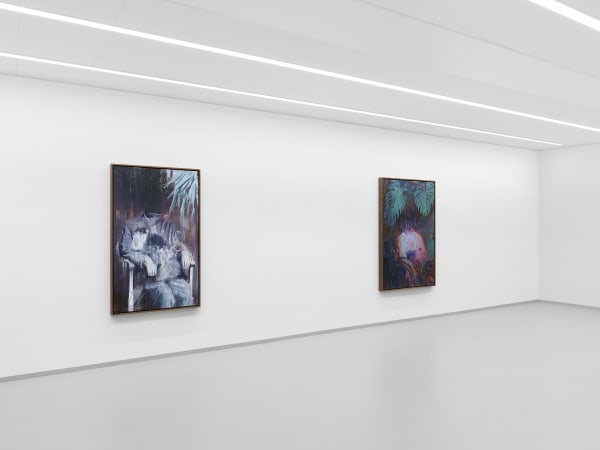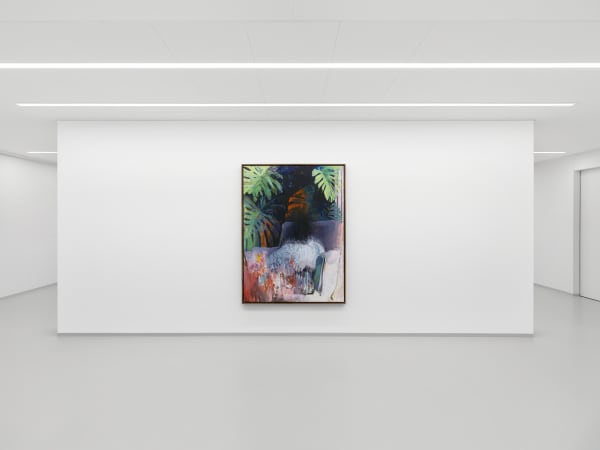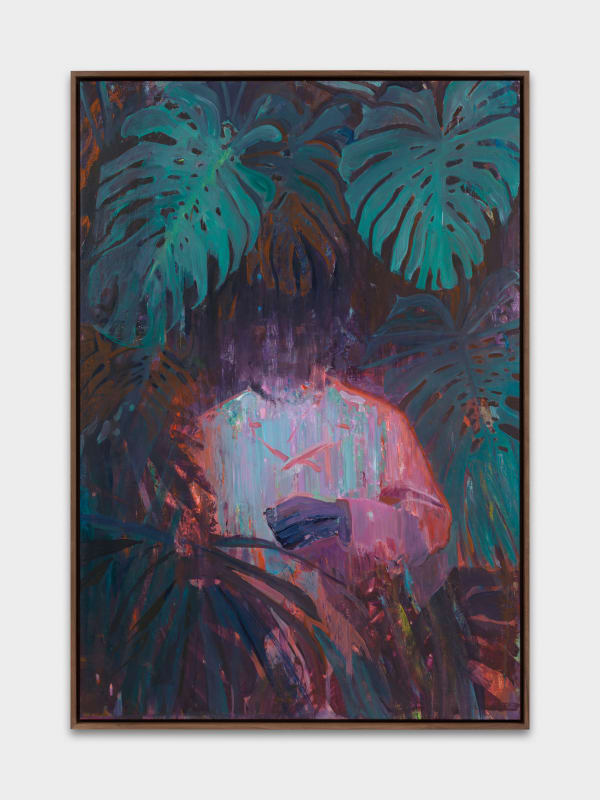Hélio Luís: Fantasma
Kutlesa is pleased to present an exhibition of Lisbon-based painter Hélio Luís. This will be the artist’s second solo presentation with the gallery since the announcement of his representation. This focused presentation brings together a selection of new and recent paintings from nearly two years of work and research.
Fantasma is a Portuguese word meaning Ghost or Phantasm. It can be described as "that which has only seeming reality or permanence","a dream, illusion, fantasy". The word comes from the Latin phantasma, denoting “specter, apparition", which in turn derives from the Greek phantasma – "image, phantom, unreality" – and from the word phantazein: "to make visible, display”.
The word Fantasma is a fitting title to this group of isolated human figures. Each painting began with one or more images from the artist’s archive of historical photographs, film frames and art history. Most of those references depict historical characters who might themselves be viewed as ghosts, haunting our collective and personal imaginations; from cultural figures of the XX century – O Pintor, Homem com Gato, O Escritor – to the Portuguese dictator António Salazar, portrayed in Homem com Macaco, who remains a spectral presence in the country’s collective imagination 55 years after his death. One figure appears repeatedly; the French poet Arthur Rimbaud, featured in three paintings – Aden, Abíssinia, O Poeta em Java. The latter shows the poet following his desertion from the Dutch Colonial Army, hiding in the Javan jungle, an historical event of which little is known. Did it even happen? No photographic records exist.
But there is another layer of meaning to the word Fantasma. Carl Jung, the famous Swiss Psychiatrist, appropriated the word Phantasm for his model of the human psyche. In his Psychological Types (1921), Jung writes: “By phantasy I understand two different things, namely, (1) phantasm and (2) imaginative activity. (...) Although a phantasm may originally be based upon the memory-images of actual experiences, its content corresponds with no external reality; it is merely the output of the creative psychic activity, a manifestation or product of the combination of psychic elements. (…) In actual everyday psychological experience, phantasy is either released by an expectant, intuitive attitude, or appears as an involuntary irruption of unconscious contents into consciousness.”
Through this new lens, Fantasma points to the inner workings of the unconscious mind, which plays a crucial role in the making of art and in the eight paintings featured in this exhibition. Layer by layer, guided by intuition and feeding on accidents and unexpected twists, the process that leads to the final work relies on the accumulation of paint over long periods of time. As much as the reference material provides the atmosphere and dramatic tension that propel the creative process, painting, after all, is more about painting than anything else, and often the source material is unrecognizable in the finished work. This is the case in O Quarto and O Poeta em Java, where the images grow out of the source material to become pure compositional invention, unrelated to any photograph or object from the real world. Such are the workings of those ethereal figures, continuously rising from the deep, striving to take shape and come alive on the boundless, never-ending surface.
-

Hélio Luís on Jornal de Letras
Hélio Luís is the theme of the chronicle of Gonçalo M. Tavares in the current issue of Jornal Jan 24, 2024Hélio Luís is the theme of the chronicle of Gonçalo M. Tavares in the current issue of Jornal For a long time now, Hélio Luís'...Read more -

GalleriesNow
The Weekender with Hélio Luís: Fantasma at Kutlesa Jan 12, 2024This week our selection of must-see exhibitions are at: Lisson Gallery, Templon, Patrick Heide Contemporary Art, Fiumano Clase, Anita Shapolsky Gallery, Nohra Haime Gallery, Kutlesa,...Read more













